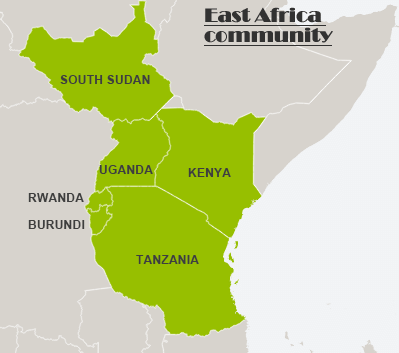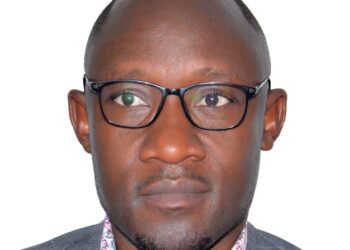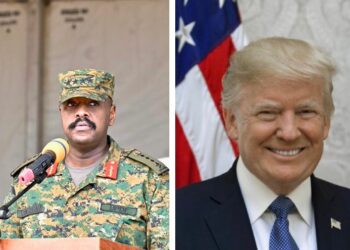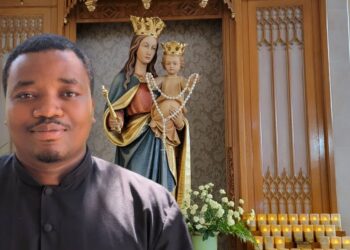President Yoweri Kaguta Museveni has spelt out his plans and commitment to tackle matters of Water, Sanitation and Hygiene (WASH) in his term starting May 2021.
During campaigns, the president and his party sold their manifesto to Ugandans. Although WASH matters are not highly pronounced in political campaigns, this time round, President Museveni dedicated a chapter on WASH interventions in the country in his manifesto, including promising to put piped water in all parts of Uganda.
“Water Supply and Sanitation NRM is going to increase overall access to safe and affordable water supply in urban areas, currently standing at 78% with an ultimate aim of 100% coverage. The key interventions will include the following: Invest in construction of piped water supply in small towns and growth centres. In particular, we shall provide safe, reliable water supplies and improved sanitation facilities to all districts and sub-county headquarters. “
Under the theme “Securing your Future”, from page 233, President Museveni outlines his government’s successes in the WASH sector, as well as what ought to be done. He lists a number of interventions that he says will lift the health burden on many Ugandans, and improve the wellbeing of the citizens.
Below is the section on WASH in the 2021-26 manifesto:
WATER, SANITATION AND HYGIENE
Water, sanitation and hygiene are essential for life and health, and are a fundamental human right for every child and adult. Easy access to clean water sources liberates households as it frees up time to do other productive work. Uganda is exceptionally endowed with water resources, covering 43,938sq.km (18%) of its 241,038sq.km total land area. It is NRM’s duty to exploit this endowment for the wellbeing of all Ugandans. Therefore, NRM is committed to extending clean and safe water to every LC1/village, ultimately providing water to every household. NRM’s priority is to increase safe water supply coverage and equity in the entire country. In 1986, only 10% (1 in 10) of the population in the rural areas had access to clean safe water. We have since increased access in rural areas (a radius of 1km) to 70% (7 in 10) and urban coverage to 80% (8 in 10).
Out of 68,731 villages in Uganda, 48,338 villages have access to clean water. NRM is going to continue focusing on construction of a safe clean water source in every village for the remaining unserved villages while at the same time implementing other planned interventions to increase safe water coverage in the country.
3.1. PROGRESS
Piped water main network system increased to 1,200 in urban areas and over 2,000 gravity flow systems by 2019, up from 37 and over 42 respectively in 1986. In the last four years, over 720,000 new customers, including industrial/institutional/ commercial customers were connected to the water supply network and the following are some of the projects to increase access to clean water: a. New large gravity flow schemes were completed in: Lirima – Phase II (Manafwa), Bukwo – Phase II (Bukwo), Bududa-Nabweya – Phase II (Bududa), Bukedea, Upper Sipi (Sironko, Kween, Kapchorwa, Bulambuli) and Ntoroko (Ntoroko).
- Construction work is ongoing on the following gravity flow schemes: i. Namrwodho – Phase II (Nebbi), Kyanvuma, Lambala in Iganga district; Buseta, Kasasira, Kameke, in Pallisa district; Kapala and Kidetok in Serere district. ii. Lirima – Phase II (Manafwa) at 90%: Bukedea (Sironko, Kween, Kapchorwa, Bulambuli) at 90%, Ntoroko (Ntoroko) at 98% and Orom (Kitgum) at 51%. c. Completed construction of piped water systems in 26 towns in Bugongi (Sheema), Bukakata (Masaka), Bukwo, Buliisa, Dokolo, Kagoma (Jinja), Kaliro, Kalongo (Agago), Ocapa and Kyere (Serere), Luuka, Midigo (Yumbe), Ntungamo, Kyalubungu (Isingiro), Nyeihanga (Mbarara), Okoro (Arua), Ovujo (Maracha), Pajule (Pader), Sanga (Kiruhura), Kasagama, Kinuuka (Lyantonde), Namagera (Jinja), Nyahuka (Bundibugyo), Iziru (Jinja), Busede-Bugobya (Jinja) and Kapelebyong. d. Ongoing construction of 11 piped water supply systems, namely Kagadi, Nazigo, Kassanda, Bulegeni, Kacheri-Lokona, Ofua, Bugobya, Bulambuli, Namayingo and Olilim, while 13 towns have been designed to completion and five towns are still under design. Nyakashaka is under procurement and three towns — Mukura, Baale and Wobulenzi not yet designed.
- The following piped water supply systems to small towns were constructed: Amudat, Kumi-Nyero-Ngora, Namwendwa, Pabbo, Buyende, Pacego, Pallisa, Rukungiri Municipality, Namagera, Namukora, Nyeihanga, Kambuga, Namwendwa, Namwiwa and Bulopa. Another three – Lwemiyaga, Kiwoko and Binyinyi — designs were completed and construction is ongoing.
3.2. WAY FORWARD
Rural Water Supply and Sanitation
- Complete construction work on the following gravity flow schemes: i. Kyanvuma, Lambala (Iganga), Buseta, Kasasira, Kameke (Pallisa) and Kapala, Kidetok (Serere). ii. Lirima – Phase II (Manafwa): Bukedea (Sironko, Kween, Kapchorwa, Bulambuli), Ntoroko (Ntoroko) and Orom (Kitgum).
- Construct and extend piped water supply (taps), deep boreholes, shallow wells, protected springs to all unserved villages. Specifically, we are going to:
- Construct new large gravity flow schemes in: Siabona Phase 1 (Bugiri– Namayingo); Nyamugasani Phase I (Kasese); Bitsya (Buhweju), Bwambara – Bugangari (Rukungiri); Ngoma – Wakyato (Nakaseke); Ogili (Agago) and Potika (Lamwo).
- Complete and expand, under a phased approach, five water systems in Nyabuhikye and Kikyenkye (Ibanda), Shuuku and Masyoro (Sheema), Bukedea
Phase II (Sironko, Kween, Kapchorwa, Bulambuli), Kabuyanda water supply (Isingiro), Rwebisengo – Kanaara Phase II (Ntoroko), Orom Phase II (Kitgum/ Agago/Pader) water systems.
iii. Drill 5,000 environmentally-friendly and sustainable hand-powered boreholes countrywide, taking into account earth crust drainage informed by science.
- Install 2,060 environmentally friendly and sustainable solar powered boreholes to increase safe water coverage in the least served villages.
- Rehabilitate old rural piped water supply schemes.
- Establish a supply chain for spare parts and outlets for borehole infrastructure to ensure regular maintenance of boreholes under supervision of the parish chief as described in the parish model.
- We will carry out science-driven geological surveys to map underground water sources.
- Promote rainwater harvesting by reducing the cost of acquiring necessary equipment such as water tanks. This water will be used for household consumption and irrigation purposes.
- Prioritise construction of bulk water supply systems in water-stressed areas. Specifically, we are going to: i. Develop large diameter wells in water stressed parts of the country covering Karamoja sub-region, the low-lying, dry expanses of Isingiro, Ntungamo, Kiruhura, Yumbe, Zombo, Koboko, Moyo, Kiboga, Kyankwanzi, Nakaseke, Nakasongola, Rakai, Buyende and Kaliro districts. ii. Bulk transfer of pumped water to water-stressed areas in Isingiro, Kiruhura/Kazo, West Nile, Kyoga basin, Nkanka (Kisoro) and Muko (Rubanda).
- Promote appropriate sanitation and hygiene technologies such as bio-digestors across the country, taking into consideration vulnerable persons and those living in areas within difficult soil formations as well as transient and fishing communities.
- Invest in the construction of sanitation facilities on highways, institutions (including schools and health centres) and public places.
- Support continuous Community-Led Total Sanitation (CLTS) for improved sanitation and hygiene to prevent diseases.
- Improve functionality, sustainability and resilience of water supply systems in rural areas to provide safe water all-year-round and reduce the number of people unable to access safe water.
Small Towns
Water Supply and Sanitation NRM is going to increase overall access to safe and affordable water supply in urban areas, currently standing at 78% with an ultimate aim of 100% coverage. The key interventions will include the following:
- Invest in construction of piped water supply in small towns and growth centres. In particular, we shall provide safe, reliable water supplies and improved sanitation facilities to all districts and sub-county headquarters.
- Construct improved public sanitation facilities in public places and selected institutions, including cluster faecal sludge management facilities in small towns and rural growth centres. The measures above will be implemented in small towns in the following areas: Busia, Butaleja, Busolwe, Budaka, Kadama, Tirinyi, Kibuku, Kyegegwa, Mpara, Ruyonza, Namasale, Kaliro, Namungalwe, Kanoni, Ngando, Bulo, Nsabwe, Ngomanene, Kiriri, Bukandula, Rugaga, Kabulasoke, Butiti, Kifampa, Kisozi, Kajumiro, Maddu, Rakai, Nsaro, Rumbugu, Birabago, Buyamba, Rwanda-Kooki, Dwaniro, Byakabanda, Kamukala, Kibbale, Bugadde, Kityerera, Busakira, Kuluuba, Kayunga, Busaana, Kamuli, Buikwe, Dokolo, Kapchorwa, Bundibugyo, Kyenjojo, Katooke, Nakasongola, Namayumba-Busunju, Kangulumira-Nazigo, Kabimbiri-Kasawo, Igayaza-Kikwaya, Kassanda, Lwengo, Bugadde-Idudi, Serere area, Soroti-Amuria-Orungo Corner, Ngenge-Chapskunya-Kiriki, Bugweri and Bwondah, Yumbe, Nwoya, Lamwo, Zombo, Amuru, Alebtong, Kole, Omoro, Maracha, Nyamarebe-Rushango-Buremba, BurungiEngari-Nkungu-Rwemikona, Rubanda, Rukiga, Karenga, Kapedo, Abim, Nyakwai, Alerek, Karita, Kalapata, Kaabong, Kawalakol, Nabilatuk, Namalu, Napak, Kangole, Kakingol, Nadiket, Moroto, Kotido, Nakapelimoru, Kathile and Loregai.
Large Towns Water Supply and Sewerage NRM government strategy is to ensure universal access to safe water supply, which entail:
(a) Improving urban water supply and sewerage coverage.
(b) All cities, towns, trading centres, wards, cells and zones to get clean safe water (at least one source per village).
(c) Water and sewerage services for the planned industrial parks. The specific interventions under National Water and Sewerage Corporation (NWSC) will include: i. Completion of Kampala Water Lake Victoria Water and Sanitation Project (KW LVWATSAN), which involves:-
– Construction of the Katosi Drinking Water Treatment Plant with capacity to produce 160 million litres per day and Katosi-Kampala transmission mains.
– Restructuring of the network in project areas of Kampala Metropolitan.
– Extension of water supply and sanitation services in informal settlements with installation of 2,600 communal stand pipes.
- Development of water and sanitation infrastructure for Mbarara, Masaka and Isingiro (southwestern cluster project).
iii. Construction and rehabilitation of water supply and sanitation infrastructure in Mbale City and the six rural growth centres of Busolwe, Butaleja, Kadama, Budaka, Kibuku and Tirinyi.
- Construction of Karuma water works, Gulu-Karuma transmission mains, supplying water from Karuma through Kamdini, Minakulu, Bobi-Palenga and Koro Abili.
- Improve and upgrade water supply and sanitation in; Adjumani urban area, including support to refugees and refugee hosting communities, Kapeeka in Nakaseke, Sembabule and Wakiso. vi. Expansion and development of sewage treatment system in Gaba and Mukono sub-catchments in the Kampala Metropolitan. vii. Work on water and sanitation projects in Hoima, Masindi, Kasese, Fort Portal, Lira, Jinja/Njeru, Lugazi and Tororo.
For more readings on NRM Manifesto, visit https://www.nrm.ug/NRM_Manifesto_2021-2026.pdf
Do you have a story in your community or an opinion to share with us: Email us at editorial@watchdoguganda.com













